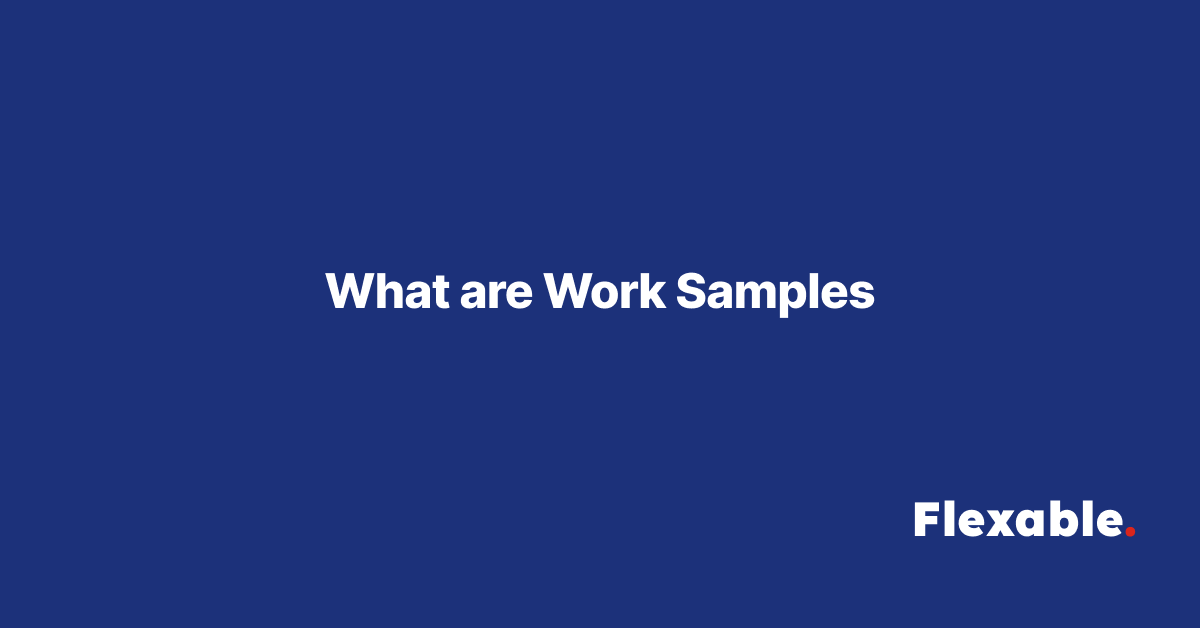Work samples are tangible examples of your previous work or projects that showcase your skills, expertise, and the quality of your deliverables to potential clients or employers. They serve as evidence of your capabilities and provide a clear representation of what you can accomplish. For freelancers, in particular, work samples are a vital tool for building trust, demonstrating credibility, and setting themselves apart in a competitive marketplace.
Whether you’re a graphic designer, writer, software developer, or marketing strategist, work samples act as your professional portfolio, giving clients a preview of the value you can bring to their project.
Why Are Work Samples Important?
In the freelancing world, clients often hire professionals they’ve never met or worked with before. This uncertainty makes work samples crucial in bridging the trust gap. Here’s why they matter:
- Demonstrates Your Skills:
A well-curated collection of work samples provides concrete proof of your abilities, showcasing your expertise in action rather than relying solely on claims in your profile or resume. - Builds Credibility:
Work samples establish you as a professional in your field, especially if they align with the type of projects your potential clients are seeking. - Helps Clients Make Informed Decisions:
Clients can evaluate your style, approach, and proficiency to determine whether you’re the right fit for their project. - Differentiates You From Competitors:
A strong portfolio of work samples can set you apart in competitive markets, especially on freelancing platforms where clients receive numerous proposals. - Showcases Versatility:
For freelancers working across various niches or industries, work samples can highlight your adaptability and breadth of skills.
Types of Work Samples for Freelancers
The type of work samples you showcase depends on your industry and the services you offer. Here are some common examples across various freelancing fields:
1. Writing and Content Creation
- Blog posts
- Articles
- Website copy
- Case studies
- Social media posts
- Whitepapers or eBooks
2. Graphic Design and Creative Arts
- Logos
- Brochures or flyers
- Web design mockups
- Social media graphics
- Branding packages
- Illustrations or digital art
3. Software Development and IT
- Code snippets
- Web applications or software you’ve built
- Mobile app screenshots or demos
- GitHub repositories
- Documentation or technical guides
4. Marketing and Strategy
- Ad campaign results
- Marketing plans
- Analytics reports
- Email marketing templates
- SEO audit examples
5. Photography and Videography
- Photography portfolios
- Video reels or edited clips
- Event coverage samples
- Product photography for e-commerce
How to Select the Right Work Samples
Not every project you’ve worked on needs to be part of your portfolio. It’s essential to choose strategically. Here’s how:
- Relevance to Your Target Audience:
Select work samples that align with the needs of the clients you’re trying to attract. For example, if you’re bidding for a project in e-commerce, showcase product descriptions or website designs you’ve created for similar clients. - Highlight Your Best Work:
Quality trumps quantity. Clients are more likely to be impressed by a few exceptional pieces than by a long list of average ones. - Show Versatility (Where Applicable):
If you work across multiple industries or niches, include a variety of samples to demonstrate your adaptability. - Keep it Recent:
Ensure your portfolio reflects your current skills and trends in your industry. Outdated work can leave a negative impression. - Get Client Permission:
If the work is confidential or owned by a client, seek their permission before using it as a sample. Alternatively, create mock projects or personal work to showcase your skills.
How to Present Your Work Samples
Presentation is as important as the work itself. A poorly organized or unprofessional portfolio can detract from even the most impressive projects. Here are tips for presenting your work samples:
- Create a Professional Portfolio:
Use platforms like Behance, Dribbble, or GitHub for specific industries, or set up a personal website to showcase your work in a polished, easy-to-navigate format. - Organize by Categories:
Group similar projects together (e.g., blog writing, web design, social media campaigns) to make it easier for clients to find relevant examples. - Provide Context:
For each sample, include a brief description explaining:- The client’s requirements or challenges.
- Your role in the project.
- The results or impact of your work.
- Optimize for Mobile and Web:
Many clients will review your portfolio on their phones or laptops. Ensure it is mobile-friendly and loads quickly. - Include Testimonials:
Where possible, pair your work samples with client testimonials or case studies to provide additional credibility.
Common Mistakes to Avoid with Work Samples
- Including Irrelevant Work:
Don’t dilute your portfolio with unrelated projects. Focus on work that aligns with your target market. - Overloading with Too Many Samples:
Avoid overwhelming clients with excessive examples. A concise, curated selection is more impactful. - Ignoring Design and Presentation:
Even excellent work can be overlooked if it’s poorly presented. Invest time in creating a visually appealing portfolio. - Neglecting to Update Your Portfolio:
Regularly refresh your portfolio to include recent work and remove outdated or less relevant samples. - Using Unauthorized Content:
Always get permission to showcase client work, especially for sensitive or confidential projects.
Benefits of Sharing Work Samples
- Builds Trust:
Clients feel more confident hiring someone with a proven track record. - Saves Time:
A strong portfolio answers many of the client’s questions upfront, speeding up the hiring process. - Supports Negotiations:
Demonstrating your value through work samples makes it easier to justify your rates. - Attracts High-Quality Clients:
A professional portfolio often draws clients who value quality, increasing your chances of securing premium projects.
Conclusion
Work samples are an indispensable part of freelancing success. They act as your professional portfolio, allowing clients to see your capabilities, assess your expertise, and envision what you can bring to their projects. For freelancers, the effort invested in curating and presenting high-quality work samples often translates into more opportunities, higher rates, and stronger client relationships.
By strategically selecting and showcasing your best work, you not only build credibility but also set yourself apart in a competitive freelancing landscape. Remember, in freelancing, your work speaks for you, make sure it leaves a lasting impression.

